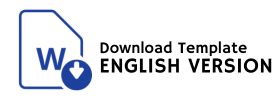Waste Management in Wonogiri Regency: Strategy Towards Sustainable Environmental Management
DOI:
https://doi.org/10.38035/jlph.v5i6.2156Keywords:
Waste Management, Sustainable Development Goals (SDGs), Sustainable EnvironmentAbstract
Waste is one of the main issues in sustainable development, especially in areas with increasing population growth rates. Wonogiri Regency through Regional Regulation Number 11 of 2018 has regulated waste management as part of efforts to create a healthy environment. This study aims to examine waste management in Wonogiri Regency in realizing a strategy towards a sustainable environment. The theory used in this study is the implementation theory of George Edwards III. The method used in this study is descriptive qualitative with the research subjects being policy implementers who play a role in waste management in Wonogiri Regency. The results of the study show that although the Regional Regulation of Wonogiri Regency has provided an adequate legal framework, the challenges of implementation in the field are still quite large, especially in terms of community participation and infrastructure support.
References
Apricia, Nadira, Matthew Jeremiah, and Andrew Trinovada. “Urgensi Perubahan Undang-Undang Nomor 18 Tahun 2008 Tentang Pengelolaan Sampah.” Jurnal Ilmiah Wahana Pendidikan 9, no. 19 (2023): 553–559. https://doi.org/https://doi.org/10.5281/zenodo.8412634.
Department of Economic and Social Affairs. “The 17 Goals Sustainable Development.” United Nations. Accessed March 6, 2025. https://sdgs.un.org/goals.
Ditjen PSLB3 Kementerian Lingkungan Hidup dan Kehutanan. “Penanganan Sampah.” pslb3.menlhk.go.id, 2024. https://pslb3.menlhk.go.id/dashboard/penangananSampah.
Effendi, Rahayu, Hana Salsabila, and Abdul Malik. “Pemahaman Tentang Lingkungan Berkelanjutan.” MODUL 18, no. 2 (2018): 75–82. https://doi.org/https://doi.org/10.14710/mdl.18.2.2018.75-82.
Hamdani. “Beragam Permasalahan Sampah Di Wonogiri, LDII Inisiasi Pengelolaan Mandiri.” Joglo Semar News. com, 2025. https://joglosemarnews.com/2025/02/beragam-permasalahan-sampah-di-wonogiri-ldii-inisiasi-pengelolaan-mandiri/.
Nugroho, Riant. Kebijakan Publik Di Negara-Negara Berkembang. Yogyakarta: Pustaka Pelajar, 2014.
Rahmayani, Chanidia Ari, and Aminah Aminah. “Efektivitas Pengendalian Sampah Plastik Untuk Mendukung Kelestarian Lingkungan Hidup Di Kota Semarang.” Jurnal Pembangunan Hukum Indonesia Vol. 3., no. 01 (2021): 18–33. https://doi.org/https://doi.org/10.14710/jphi.v3i1.18-33.
Sholihah, Khofifah Kurnia Amalia. “Kajian Tentang Pengelolaan Sampah Di Indonesia.” Jurnal Pendidikan Geografi Swara Bhumi 03, no. 03 (2020): 1–9.
Sugiyono. Metode Penelitian Kuantitatif, Kualitatif & RND. Bandung: Alfabeta, 2013.
Sukmaniar, Wahyu Saputra, Muhammad Hapiz Hermansyah, and Parasmita Anggraini. “Bank Sampah Sebagai Upaya Pengelolaan Sampah Di Perkotaan.” Environmental Science Journal (Esjo): Jurnal Ilmu Lingkungan Vol. 1. No, no. 2 (2023): 61–67. https://doi.org/10.31851/esjo.v1i2.11960.
Tangkilisan, Hessel Nogi S. Implementasi Kebijakan Publik (Transformasi Pikiran George Edward). 1st ed. Yogyakarta: Lukman Offset & Yayasan Pembaruan Administrasi Publik Indonesia, 2003.
Utami, Ajeng Putri, Nafisah Nur Addini Pane, and Abdurrozzaq Hasibuan. “Analisis Dampak Limbah/Sampah Rumah Tangga Terhadap Pencemaran Lingkungan Hidup.” Cross-Border Vol. 06., no. No. 02. (2023): 1107–12. https://journal.iaisambas.ac.id/index.php/Cross-Border/article/download/2138/1656.
Winarno, Budi. Kebijakan Publik: Teori Dan Proses. Cetakan ke. Jakarta: MedPress, 2007.
Wonogiri, Pemerintah Kabupaten. “Profil Wilayah Kabupaten Wonogiri.” wonogirikab.go.id, 2025. https://wonogirikab.go.id/profile/progile-wilayah/.
Downloads
Published
How to Cite
Issue
Section
License
Copyright (c) 2025 Sulatin Baeti Janah, Jadmiko Anom Husodo

This work is licensed under a Creative Commons Attribution 4.0 International License.
Authors who publish their manuscripts in this journal agree to the following conditions:
- The copyright on each article belongs to the author(s).
- The author acknowledges that the Journal of Law, Poliitic and Humanities (JLPH) has the right to be the first to publish with a Creative Commons Attribution 4.0 International license (Attribution 4.0 International (CC BY 4.0).
- Authors can submit articles separately, arrange for the non-exclusive distribution of manuscripts that have been published in this journal into other versions (e.g., sent to the author's institutional repository, publication into books, etc.), by acknowledging that the manuscript has been published for the first time in the Journal of Law, Poliitic and Humanities (JLPH).


























